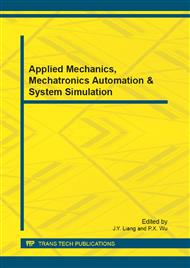p.803
p.808
p.814
p.819
p.824
p.828
p.833
p.839
p.843
Security Workflow with Schematic Protection Model
Abstract:
Application of Schematic Protection Model (SPM) on workflow access control is studied. Fine grained access control properties of SPM made it feasible to express workflow security policies. SPM link predicate semantics is extended in the workflow context. Link predicate between workflow activities is applied to constrain the take grant enforcement. License access control in the workflow is also modeled by SPM Inner control ticket.
Info:
Periodical:
Pages:
824-827
Citation:
Online since:
September 2012
Authors:
Keywords:
Price:
Сopyright:
© 2012 Trans Tech Publications Ltd. All Rights Reserved
Share:
Citation:


